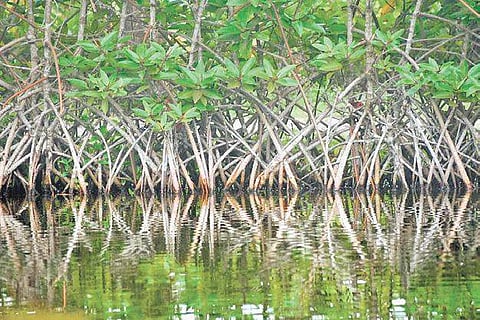

ALAPPUZHA: Mangroves are described as the roots of the sea and wetlands, but the rate at which they have been cut in the state is alarming. A study conducted by the Forest Survey of India in 2017 showed the total area of mangroves in Kerala has come down from 700 sqkm in 1950-60 to 50sqkm.
Concerned, the Kerala Forest and Wild Life Department (FWLD) has begun a preliminary survey as part of setting up the Mangrove and Marine Biodiversity Foundation (MMBF) to preserve the existing shrubs in the state. Mangroves protect coastlines from erosion and are home to a wide array of diverse life.
Further, mangrove forests also store high density of carbon, thereby regulating carbon in the atmosphere. FWLD Divisional Officer Raju K Francis said the government’s aim is to preserve and protect mangroves with the help of private individuals.
“The department has identified around 1,748 hectare mangroves across the state. If owners of the land are ready to sell, the government will buy and preserve them after paying reasonable rate. If they’re not ready, then the department will give them financial assistance to preserve them,” said Raju.
Rs 4,000 per acre allocated for preserving mangroves
An amount upto Rs 4,000 will be allotted annually for preserving an acre of mangrove forest in the state. Mangroves have declined in Kerala, mainly due to filling of wetlands for construction activities. With the new foundation, the government hopes to put an end to the destruction of the shrubs.
Agriculture Department former executive engineer MR Anilkumar, who is preserving an active mangrove forest in Kayamkulam said: "Mangroves are one effective way to check carbon in the air. One hectare of mangrove plantation can absorb around 1.5 tonne carbon per year as these shrubs can absorb 30 per cent carbon more than other plants. The government’s step is wise and can help in protecting our environment."
Shrub stats